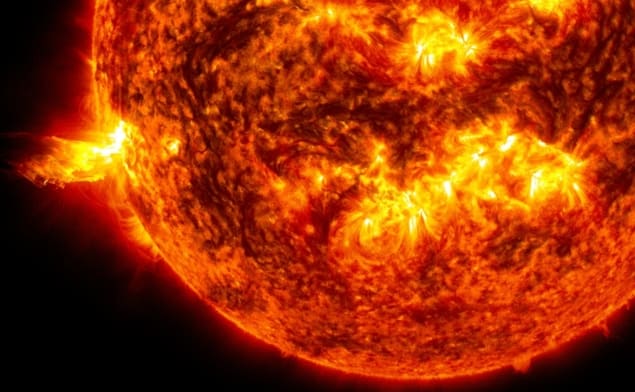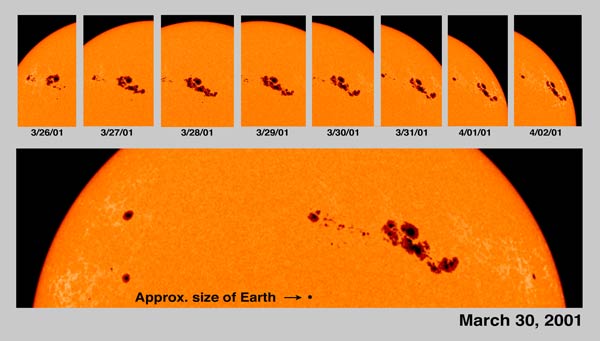
The Sun appears to be far less active than other similar stars, an international team of astronomers has discovered. Timo Reinhold at Max Planck Institute for Solar System Research and colleagues made the unexpected discovery after studying long-term data gathered by the Kepler Space Telescope. Their findings could give astronomers a broader perspective on evolution of the Sun and could mean that our star is in a midlife lull at the moment.
Centuries of observations of the Sun show that the numbers of sunspots changes in reliable, time-varying cycles. More sunspots mean more magnetic activity at the surface of the Sun and more violent events like mass ejections – which can cause solar storms on Earth that can disrupt some technologies. Other main-sequence stars like the Sun are also expected to have similar variations, but until now little was known about how they compared to the Sun.
Spots on other stars are too small to resolve from Earth, however their movements on the surface of a star cause periodic variations in its brightness that can be observed – and this can be used to calculate magnetic activity. For Reinhold’s team, this effect provided a unique opportunity to compare the Sun’s activity with that similar stars using NASA’s Kepler Space Telescope.
Time-varying brightness
Over four years, the instrument measured the time-varying brightness of 150,000 main-sequence stars as it searched for exoplanets. At the same time, ESA’s Gaia spacecraft measured the motions and positions of stars across the galaxy with similarly impressive accuracy.

Early-warning system for sunspots
By combining and analysing these datasets, Reinhold and colleagues identified 369 stars with similar temperatures, masses, ages, chemical compositions, and rotational periods as the Sun. They found that despite these similarities, most of the stars displayed far higher levels of brightness variation that indicate average activity levels around five times higher than that of the Sun. The team noted that this discrepancy could have arisen since the brightness variations of some Sun-like stars may be too subtle for Kepler to detect, eliminating them from their analysis and boosting the average.
Alternatively, this average could be indicative of Sun-like stars, which suggests that the Sun could have gone through similar periods of higher activity in the past. This idea is in line with other research that suggests that towards the middle of their lifetimes, main-sequence stars could shut down their activity cycles while maintaining their rotational speeds. Reinhold’s team now hope to explore these ideas in more detail through upcoming measurements by instruments including TESS and PLATO; potentially leading to new insights into how the Sun will evolve in the future.
The research is described in Science.



